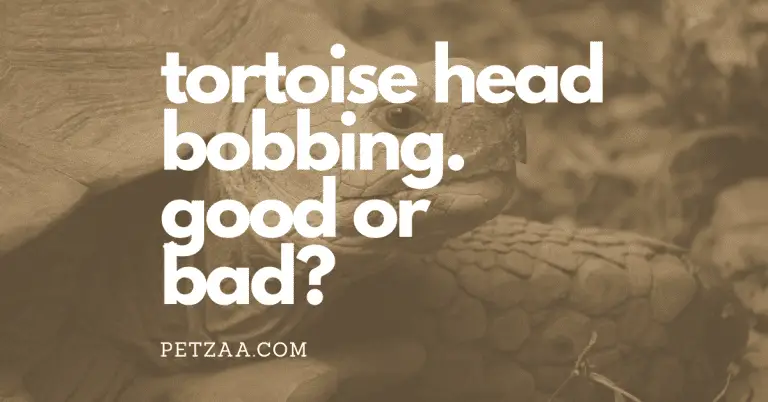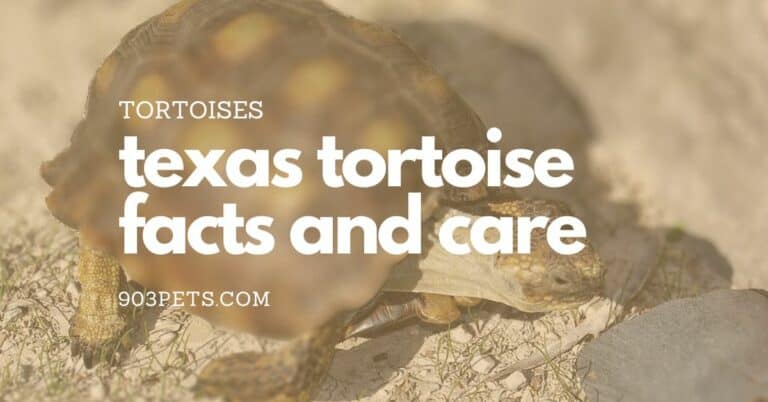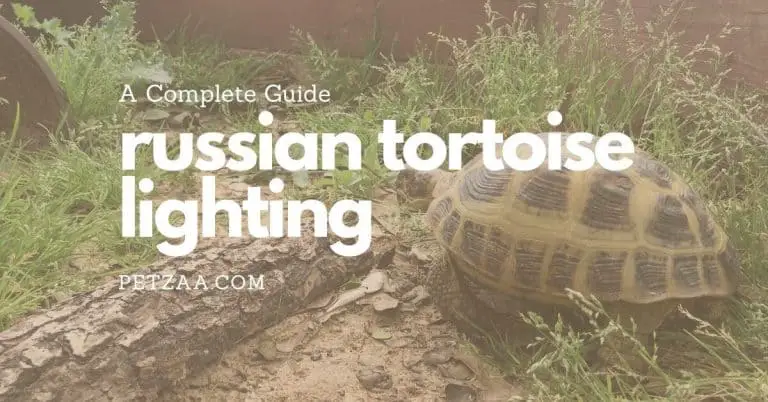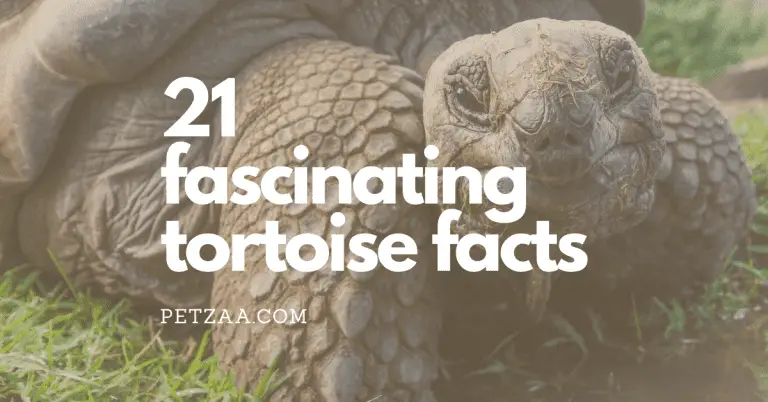21 Pet Tortoise Enrichment Ideas [Budget Friendly]
Tortoises may not get bored, but they do need enrichment in order to live their best lives. Tortoise enrichment can come from two primary mechanisms; environment and feeding. Tortoise environment enrichment can include increased area, live plants and grasses, terrain variety, natural obstacles and water. Food enrichment includes food variety, feeding methods like hanging greens, and forced foraging.
Once you have a pet tortoise, you may notice that they don’t look like they are having fun or might even be bored.
The reality is that tortoises don’t experience boredom the way that we do. However, they can still lack the ability to use some of their natural tendencies when kept in captivity.
![21 Pet Tortoise Enrichment Ideas [Budget Friendly] 1 21 Tortoise Enrichment Ideas](https://cdn-0.903pets.com/ifywhoft/2021/07/21-Tortoise-Enrichment-Ideas.jpg)
When you begin to change things about their environment and feeding, you are providing “enrichment” for your tortoise pal.
Let’s look at 21 ways to provide enrichment to your pet tortoise so they won’t look bored.
Is My Tortoise Bored?
What makes you think your tortoise is bored? Does your tortoise not move around much when in its enclosure but darts around like a jackrabbit when you let it spend time in the yard?
It’s important to understand the behaviors you see that make you think the tortoise is bored. We want to rule out health conditions versus needs for enrichment.
In a scenario where a tortoise is lethargic in their indoor enclosure but goes wild outside likely means they need more space and variety indoors.
It is best not to think about whether your tortoise is bored, but rather if they have all their needs met.
Plants and Natural Environment Enrichment
In order to provide a healthy environment that matches your tortoise’s natural instincts, start by understanding their species and native habitats. Then, try to mimic these to a degree.
One of the easiest and most natural ways to provide enrichment for your tortoise is to use live plants and natural materials.
One word of caution, do not use artificial fertilizers or pesticides on any foliage you plan to place in your tortoise enclosure. Remember that plants absorb nutrients from the soil, so anything in the soil will make it into the plant. This becomes something you tortoise may eat.
Let’s start with some common easy live plants.
Spider Plants
Spider plants are safe and easy to keep alive. They can grow quite large, and their cuttings are easy to cultivate into additional plants. Spider plants are fantastic at cleaning the air as well.
Live Ferns
Another goto plant is a fern. Ferns love moisture and humidity while providing great cover for a tortoise. Plant a few of these near each other, creating a natural hide for your tortoise.
Just be sure there is enough room between the fern plant bases so that your tortoise can get through.
Natural Grasses
If you are using soil substrates, you can plant natural grasses in the enclosure. Depending on the depth you go with this, you could begin to create a bioactive environment.
Grasses like tall fescues, can be eaten by tortoises as well as providing something to navigate.
Try taller clumpy grasses as obstacles to maneuver.
Some good varieties of grasses include Bermuda, alfalfa, rye, rice.
Clover
Clover is a great ground cover that is pretty easy to grow. Cut a piece of clover turf out of a growing bed and watch some species of tortoise chow down.
Others may just enjoy the feel under their feet. Keep it moist every day to keep it growing.
Dandelions & Sowthistle
Yes, these are weeds, but tortoises find them delicious. Our Russian tortoise goes nuts over both of these when you treat her with it.
Dandelions are easy to grow; they are weeds, after all. However, don’t expect to keep them alive in a tortoise enclosure, as your tortoise will eat them to the point that they will die.
We purchase dandelion greens at Sprout’s, Albertson’s, and Brookshires, depending on the part of the country you may be in.
Of course, in the spring, we get them out of the yard before any lawn treatments are applied.
Natural Deep Substrates
Most tortoise species dig to some extent. Whether that is under dead leaves and foliage or into sand and soil, digging is natural.
It only makes sense that you want to provide digging opportunities for your tortoise to keep them living their best lives. Providing an inch or two of substrate just isn’t going to cut it.
We recommend a minimum substrate depth of 2.5 times the height of your tortoise.
Think about it. If your tortoise wants to dig, giving it the ability to burrow down twice its height means it can fully hide if that is its inclination.
Variety of Substrates
Just like humans, tortoises will naturally run across different types, moisture, textures, and compactness of substrate in the wild.
If you use only coconut fiber, then when does an Indian Star tortoise get to dig in something more substantial and gritty?
We love the idea of using at least two different types of substrate in an indoor enclosure. If using a soil-based substrate, keep one side dry and the other side moist.
Another idea is using coconut fiber on one side and an 80/20 mix of soil and sand.
Rocks
Using rocks to create a variety of areas is inexpensive and highly helpful in providing a more natural environment.
Flat rocks make for great sunning spots.
Larger rocks or many medium-size rocks can create natural obstacles for your tortoise to navigate around. To more maneuvering they have to do, the more exercise they get walking through the enclosure.
Be sure the rocks will not fall onto your tortoise, and if the tortoise flips over, it has space to get right-side up.
You can even create climbing walls by securing lots of rocks together. When doing this, use aquarium-safe adhesives or sealants and secure the structure to the interior of the enclosure.
Note: be sure the rocks you use are not small enough to swallow.
Logs and Tree Limbs
Depending on the size of your tortoise, you can find a log, trim it to size and use a hole saw to chisel to make a hole in it plenty large for a small tortoise to seek shelter in or walkthrough.
It is even easier to place a few tree limbs in such a way that the tortoise can navigate under or across them. Between the limbs makes a great place to hide tortoise treats for them to discover along their route.
Water
Yes, water can be used to enrich your tortoise enclosure.
Instead of just placing a water dish in the enclosure, sink it into the substrate to make for a more natural way to enter and exit the water.
Think about making the lip of the dish level with, or below, the substrate like a natural pond or puddle might be.
Again, this is where you need a deeper substrate than most new tortoise owners think.
Tortoise Toys and Man Made Enrichment
Beyond natural enrichment items, you can use purchased products if natural is not readily available to you.
When selecting artificial products, ideally, you would look for objects that mimic natural products when possible.
Let’s take a look at some options.
Man-made Rocks
If real rocks are too heavy or you don’t have access to larger rocks, you can always look at manufactured rocks.
These can be made from ceramic, plastic, or another type of resin.
When using manufactured rock, be careful that the rocks are stable and don’t flip over when your tortoise crawls over them.
This is why we prefer resin manufactured stones instead of hollow plastic rock replicas. The resin structures are heavier and are less apt to tip over.
Go For Realistic Items
When using man-made items in your tortoise enclosure, it is best to stick with more realistic-looking items or items made from natural products.
For instance, the Niteangel wooden ladder bridge is made from natural wood combined with wire. It can be used horizontally as a hide or bridge. Vertically it can be used as a divider or obstacle to go around.
Or, this water bowl makes for a great tortoise soaking tub (pond). Sure, its color isn’t terribly realistic, but the shape is irregular and, when sunk in the substrate, is easy in and out for your tortoise, which is more like many natural water sources.
Tortoise Toys
Yes, tortoises can even enjoy playing with toys.
We’ve heard stories of multiple tortoises enjoying push and pulling on dog exercise balls, like the Jolly Pets Tug-N-Toss Dog Toy Ball with Handle.
Other tortoises may like the classic red Kong toy that can be rolled around, but its shape means it won’t go in a straight line. You can even add small bits of food in the Kong toy that will drop out periodically for more enrichment.
Still, others like to push around small shoe boxes. Who knows why, but these inexpensive objects can provide tons of enjoyment. Just be sure to supervise and pull the boxes if the tortoise starts to nibble on the cardboard, which is not good for them.
Note: I’ve seen you! 🙂 Really, our Russian actually does like pushing shoeboxes or other small boxes around when she’s in a mood. Go ahead, laugh, but don’t knock it until you try it. Lol!
Feeding and Schedule Enrichment
Another way to provide enrichment and not have a “bored” tortoise is to vary their feeding schedule and the way you feed them.
Variable Feeding Schedule
Tortoises can be fed every day at the same time and with the same food. However, this is very unlike the way they eat in nature.
There are days where tortoises will eat plenty, days where they eat some, and other days tortoise will not eat anything.
Try varying up their schedule and the amount of food you serve them. Maybe one day is a bountiful smorgasbord of veggies and fruits. The next day may be no food. Followed by a day of greens only and then a fruit and veggie day.
Feed A Varying Diet
Human beings might get bored eating greens every day. Tortoises may not feel boredom the way we do, but eating the same thing for every meal is certainly not natural for tortoises, nor is it healthy.
Tortoises need to eat a variety of plants to get all the nutrients they need. In captivity, we supplement with tortoise pellets and, on occasion, calcium.
So, bring some color into their diet. Hide a piece of squash or watermelon in their enclosure from time to time. How about an edible flower or blossom.
Eat In A More Natural Way
When it comes to eating, tortoises don’t find cut-up veggies in nature. Nope, they have to work at breaking of bit size pieces of anything they want to eat.
So, don’t dice up their food on a plate to feed them. Doing so reduces the natural exercise they need while consuming those calories and vitamins.
One idea is to hang greens in a clump from the top of the enclosure. This mimics a more natural approach of a tortoise having to stretch and pull to get a bite.
Another idea is to feed your tortoise by placing its food throughout the enclosure rather than in one place. This resembles more of the foraging nature of the tortoise, walking from one place to another to gather its food during the day.
Finally, this is where the natural plantings of edible plants come to the rescue. Allow your tortoise to free graze from living plants in the enclosure. You can even move the planting locations around in the enclosure from time to time to encourage natural foraging behaviors.
Final Thoughts
Tortoises don’t actually experience boredom as we humans do, however, they do suffer from not having their natural needs met properly.
If a tortoise looks “bored” and yet is healthy, then the most likely need is enrichment in its environment. Everything from natural enclosure features and manufactured toys to varying feeding schedules and feeding methods can all lead to a happier and healthier tortoise.
Resources
- https://www.tortoiseowner.com/do-pet-tortoises-need-toys/
- https://tortoisegarden.org/2015/07/27/enrichment-providing-mental-well-being-for-your-tortoise/
- https://tortoiseforum.org/threads/toys-for-tortoises.66440/
- https://sites.google.com/site/tortoiselibrary/Indoor-Housing/enrichments
If you think your pet is ill, call a vet immediately. All health-related questions should be referred to your veterinarian. They can examine your pet, understand its health history, and make well informed recommendations for your pet.
903pets.com Staff


![6 Reasons Why Tortoises Squeak, Croak, and Quack? [Tips] 2 why does my tortoise squeak and quack](https://cdn-0.903pets.com/ifywhoft/2021/02/Why-Is-My-Tortoise-Squeaking-tiny-768x402.png)




![How Often Should You Clean An Indoor Tortoise Enclosure? [Schedule] 12 tortoise - indoor cage cleaning schedule - how often tiny](https://cdn-0.903pets.com/ifywhoft/2022/03/tortoise-indoor-cage-cleaning-schedule-how-often-tiny-768x402.png)